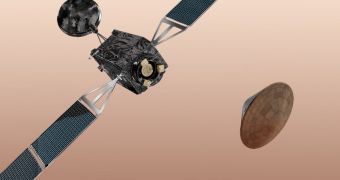Officials with the European Space Agency (ESA) announce that the demonstration lander they will send to the Red Planet in 2016 has been named Schiaparelli. The vehicle takes its name from famous Italian astronomer Giovanni Schiaparelli, who lived in the 19th century.
The astronomer's major contribution to science was a map showcasing almost all Martian surface features. This map represented a point of reference in the field for many years, until more complex telescopes enabled scientists to study the Red Planet in more detail.
ESA has decided to name its entry, descent, and landing demonstrator module after the Italian scientist to honor his legacy. The spacecraft represents the first attempt by the international space agency to perform a controlled descent maneuver onto the surface of another world.
Schiaparelli will take off in 2016, as part of the first leg of the ExoMars mission, which ESA is conducting in cooperation with the Russian Federal Space Agency (RosCosmos). The second part of the mission will be conducted in 2018 and will feature another suite of spacecraft.
The 2016 mission consists of the Schiaparelli and the Trace Gas Orbiter, a platform designed to study the origins of the methane gas in Mars' atmosphere. In addition, the TGO will contribute to selecting a proper landing spot for the ExoMars rover, which will launch in 2018.
Schiaparelli's role is to act as a technology demonstrator for ESA, certifying that the agency is mature enough to control the descent of a lander through the atmosphere at very high speeds. The spacecraft will only have 8 minutes to decrease its speed enough for a safe landing.
It will enter the Martian atmosphere at a speed or roughly 21,000 kilometers per hour (13,050 miles per hour), but it will have to decelerate to just 15 kilometers (9 miles) per hour before it lands. During the descent, sensors outside the vehicle will be collecting critical data for later analysis.
If everything goes well and Schiaparelli lands safely, additional measurements will be conducted in a region of Mars called the Meridiani Planum, where the lander is scheduled to touch down.
“Considering the importance of Giovanni Schiaparelli’s pioneering observations of Mars, it was an easy decision to give his name to the ExoMars module that is paving the way to the further exploration of the Red Planet,” says the Director of Science and Robotic Exploration at ESA, Alvaro Giménez.

 14 DAY TRIAL //
14 DAY TRIAL //